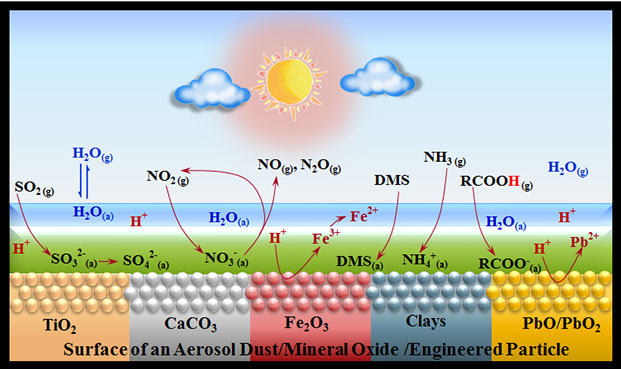 Our research is focused on simulated laboratory studies to discover hidden reaction
pathways and mechanisms of complex environmental processes. These studies provide
essential molecular level insights of surface chemistry and photochemistry of mineral
oxides and engineered nanoparticles, during their environmental "aging", to better
understand their impact on various ecosystems. The knowledge from these studies is
then applied to find remedies for current environmental issues and develop nano-based
polymer composites for various applications.
Our research is focused on simulated laboratory studies to discover hidden reaction
pathways and mechanisms of complex environmental processes. These studies provide
essential molecular level insights of surface chemistry and photochemistry of mineral
oxides and engineered nanoparticles, during their environmental "aging", to better
understand their impact on various ecosystems. The knowledge from these studies is
then applied to find remedies for current environmental issues and develop nano-based
polymer composites for various applications.
Our research follows two main avenues. First, interdisciplinary studies to answer the questions, (i) how, and (ii) why different metal oxides and engineered nanoparticles behave differently during their environmental processing under various environmentally relevant conditions, and (iii) what are the potential impacts of these processes on aquatic life. These studies will specifically focus on chemical and photochemical transformations and environmental processing of metal oxides in mineral dust, as a source of trace metals to aquatic life, and engineered nanoparticles. We are also interested in aqueous phase behaviors of these "processed" particles, in the presence of organic and inorganic pollutants. The second avenue is to develop catalytic systems and polymer composites, based on metal oxides and nanoparticles (including nanofibers), using insight from the above heterogeneous studies, to address various environmental issues in open water bodies, including increasing amounts of wastewater pollutants.
In our research, we combine cutting-edged-technologies in spectroscopy (FTIR, XPS, ICP-MS, UV-VIS, DLS), microscopy (SEM, TEM) and chromatography (GC-MS, HPLC) in various custom-built reactor systems. The results from these studies will advance our knowledge and understanding in the fields of polymer materials and environmental chemical sciences, including environmental chemistry in aqueous phases, atmospheric chemistry and geochemistry.